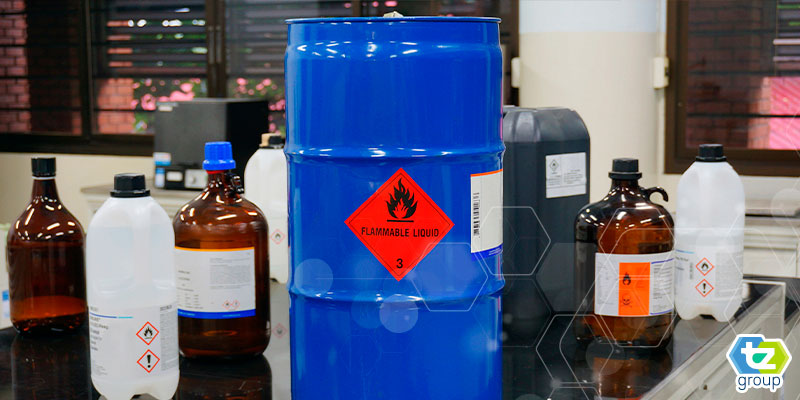Hazardous materials are a critical part of many industries, ranging from pharmaceuticals, automotive, aviation, to specialized chemical production.
However, the safe handling, storage, and disposal of these materials can be a challenging aspect of the supply chain. These materials could pose risks to the environment, as well as human health and safety. Therefore, it’s essential to follow the necessary safety protocols and adhere to regulatory requirements.
This blog post delves into the Occupational Safety and Health Administration (OSHA)’s Hazard Communication Standard (HCS), general chemical safety guidelines, and the importance of safe handling.
Understanding OSHA’s Hazard Communication Standard (HCS)
The HCS provides a framework for the proper labeling, classification, and communication of risks associated with hazardous materials. One of the key requirements is to develop and maintain a written hazard communication program and make it accessible to all employees.
An essential component of this program is a comprehensive inventory of hazardous materials, along with their corresponding Safety Data Sheets (SDS). The SDS convey crucial information, including material identification, potential hazards, and safety precautions.
It is crucial for employees handling hazardous materials to familiarize themselves with the SDS and adhere to the outlined safety measures.
General Chemical Safety Guidelines
Beyond complying with the HCS, organizations should implement general chemical safety guidelines that encompass various aspects of hazardous materials management.
Some of the best practices include proper labeling and storage, maintaining appropriate ventilation, and implementing spill containment and cleanup procedures. Additionally, appropriate Personal Protective Equipment (PPE) should be selected and used by employees who work with hazardous materials.
Regular employee training should be conducted to reinforce safe handling practices and help identify areas that need improvement.
Importance of Safe Handling
The consequences of improper handling of hazardous materials can be severe, leading to harmful impacts on the environment, the health and safety of employees, legal repercussions, and damage to company reputation.
Following OSHA’s HCS and general safety guidelines helps mitigate these risks and fosters a safe working environment. It enables employees and managers to identify, evaluate and manage physical and health hazards in the workplace, promoting overall organizational resilience and sustainability.
TZ Group’s Commitment to Safe Handling
At TZ Group, our utmost priority is to ensure that we handle hazardous products with utmost care, in compliance with all local, national, and international regulations.
We understand the gravity of the responsibility bestowed upon us and have incorporated strict safety measures that permeate the entire organization. Our processes, facility, equipment, and workforce are judiciously geared to guarantee the safe management of the hazardous materials we handle, always with environmental sustainability and employee wellbeing in mind.
Hazardous materials: Explore TZ Group’s Product Range
The safe handling of hazardous materials is an indispensable aspect of business operations in many industries.
Compliance with the OSHA Hazard Communication Standard, adoption of general chemical safety guidelines, and a steadfast commitment to safe handling not only protect the environment and the health of employees but also help to shield the organization from potential legal issues and reputational damage.
As a trusted partner, TZ Group is dedicated to providing safe, reliable handling of hazardous products that meet regulatory requirements and promote sustainability. We invite you to visit our website to learn more about our product offerings and how we can support your business needs.


